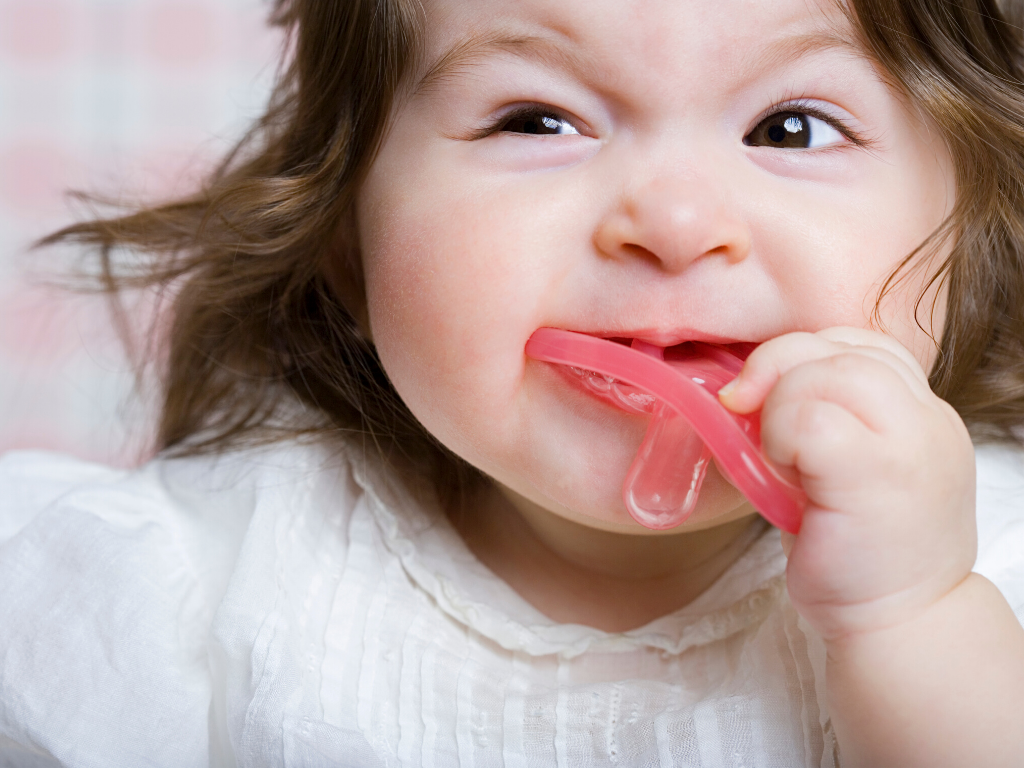
Are You Scared To Give Your Baby A Pacifier?
February 17, 2020
Soothies, binkie, paci…whatever you call it in your family, pacifiers have been used for generations.
Before polymers were used from the discovery of rubber trees, cultures around the world used things like beads made of wood, or other things like ivory, mother-of-pearl, bone, or coral, were used on the opposite end of a rattle, or the “gum stick” to help soothe a baby.
Modern pacifiers in the United States undergo an immense amount of regulation. Early models proved two-piece pacifiers and hard plastic pacifiers posed too much risk and required oversight. Today, the worry isn’t so much in the material that is used, but IF pacifiers should be used! Concerns like “nipple confusion” or of orthodontic damage done if they are used too long into adolescence.
The concern about “nipple confusion” stems from trouble breast- and chest-feeding families may have if a pacifier is introduced too soon after birth. The thought is that a baby will be soothed by sucking and waive their natural cues to eat.
The other concern is that a baby will become used to sucking on the pacifier, and “forget” how to feed from the breast, making it harder for families to sustain that form of nutrition. We want to dispel the notion of “nipple confusion” for all those families who feel afraid to introduce a pacifier or bottle for fear of sabotaging a breastfeeding relationship.
Your baby is smart. Your baby is not confused!
Your baby understands that eating from a bottle is easier than latching and suckling. It isn’t nipple confusion – it’s nipple preference! So let’s celebrate your smart baby! And we can support their need to suckle, and your desire to feed at the breast. Both can happen! To counter the smooth flow of milk from a bottle, we suggest you introduce Paced Bottle-Feeding.
If you want to use a pacifier, we recommend using it only when you know the pacifier is not delaying a feed. The need to suck is a real comfort, and some babies need to suck more than others. Pacifiers are a great way to help those babies find comfort in between feedings.
As for the type of pacifier to use, you may be feeling overwhelmed with the options!
Some brands you may consider:
- Natural rubber pacifier: natursutten
- Soothie Pacifier: One piece and easy to find in stores
- Soothie Pacifier: With detachable, and easy to clean toy
- Best for newborns: Mam Brand
One last note on pacifier use and when to introduce them:
Just like breastfeeding is a skill that your baby has to develop, learning how to suckle a pacifier and have the ability to hold it in one’s mouth is a skill that has to be developed! Many families wait to introduce a pacifier for fear it can damage a breastfeeding relationship, and inadvertently miss the window of opportunity to introduce its use.
So! We recommend introducing pacifiers (and bottles if you plan to use them AT ANY TIME in your feeding plan) between 6-10 weeks of age. They don’t have to be used all the time, but without at least some sporadic use, you will never get the benefits of these tools.
Leave a Reply Cancel reply
Become an Uptown Doula Insider
Become an
Uptown Doula Insider
Get advice, tips and updates directly to your inbox by becoming a subscriber!
We respect your privacy.
Uptown Doula is Charlotte's first choice in birth support & postpartum care.
Our team of professional doulas in Charlotte, NC provides families with evidence-based birth support, postpartum & newborn care, infant feeding support, childbirth education, placenta encapsulation, and more.
We support new and expectant parents in and around Charlotte, NC, including Denver, Huntersville, Cornelius, Davidson, and Pineville.
Get Social with @UptownDoula | #UptownDoula
Follow us for all of the latest news and updates to your newsfeed. Then join the conversation by tagging us!
I am not a doctor, but I do work with newborns a lot as a photographer. Many moms ask if i t is OK if they use a pacifier. Some babies seem to just love it, others, not so much. I did some research and put together an article. I hope it can help others.
https://www.panosproductions.net/soothe-your-crying-baby-with-confidence-what-to-know-about-pacifiers